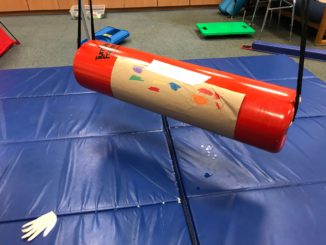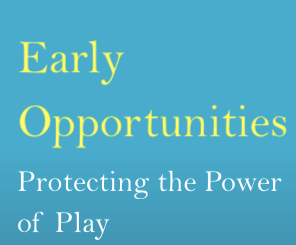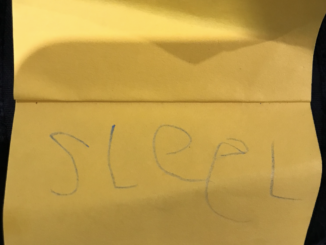Before a child is ever able to write, and before they learn to control the small muscles of their hands, they need to have full-body strength. This comes mainly in the form of strength in their core and trunk — where you might call your abs, your back muscles, etc — and strength in their upper arms and the other joints of the arm, like the shoulder, elbow, and wrist.
Like everything else, children instinctually gravitate toward play that’s going to strengthen these muscles. And we can help, in the way we play with our children!
These two slides give eight examples of games, activities, and play to engage in with our kids that boost core and upper body strength. The first slide is generally geared toward younger children (starting from young toddlers on up), while the second slide is generally a little more geared toward older children, but there’s no hard and fast rules as long as you’re being safe and your child is happy and enjoying it. (If your child is distressed or disliking an activity, stop!)
You may notice a theme throughout these activities of starting and stopping — pushing and pulling, going off balance, then stopping, then starting again. Our core muscles in our bodies learn to react to unexpected input by experiencing lots of these “stops and starts”. Picture a car driving forward and then unexpectedly having to brake — your body naturally would move forward or lean forward, but by engaging your core muscles, you can stop it and keep it upright. It’s these same muscles that regularly keep us upright and supported, so playfully challenging them with stops and starts gives them a workout but in a fun way!


[Image descriptions:
Both images have a palette of pink, purple, and tan. The title of both images is, “Play with your child…increase core and upper body strength!” There is a subtitle, “Everything happy always!” with an asterisk. At the bottom, the asterisk explains what that means: This should be playful and delightful. If your child is showing distress at anything you’re doing, stop!
The first image shows four activities. Next to each activity is a stick figure drawing illustrating what is verbally described in the activity.
1. Horsey Ride – bounce your child on your lap, facing you. Let them tilt left and right as though they’re going to fall, like a horse bouncing around.
2. Upside Down! – sit your child on your lap facing you. Lean them back on your knees until their head is inverted. Hold their hands and pull them up.
3. Swinging Blanket – Two adults hold a blanket between them. The child sits or lies in the blanket. Swing back and forth, then stop! Then start again!
4. Row, Row, Row your Boat – Sit with your child on your lap, or on the floor facing you. Hold hands. Gently push them backward and pull them forward, like rowing a boat, while singing.
On the next slide are 4 more activities.
5. Crawling & Pushing – Push a toy car or “walk” a toy animal along the ground while crawling on all fours. Pretend to be an animal, crawl and make animal noises.
6. Push & Pull Train – Push or pull something that is heavy, like a wagon, a laundry basket, a plastic tote, etc. Put toys or a sibling in and call it a train ride!
7. Wheelbarrow Walking – The adult holds the child’s feet and the child walks on their hands. How far can they go?
8. Prop to Play – For quiet activities that the child would already do, like drawing, tablet time, or reading a book, try putting the book, paper, or tablet on the ground. Have the child lie on their tummy and prop on elbows to play.
End description.]



